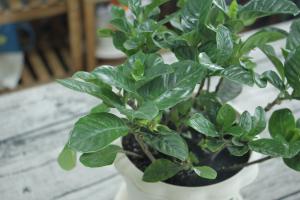Introduction
When it comes to planting olive trees, one of the most common questions that farmers and gardeners ask is: how many olive trees should be planted per acre? The answer to this question depends on several factors, including the variety of olive tree, the soil type and fertility, the climate, and the intended use of the olives, among other considerations. In this article, we will explore the various factors that influence the optimal number of olive trees per acre, as well as the benefits and drawbacks of different planting densities.
Factors to consider
The first factor to consider when deciding how many olive trees to plant per acre is the variety of olive tree. Different varieties have different growth habits, yields, and spatial requirements, which will influence the optimal planting density. For example, some varieties, such as Arbequina and Koroneiki, are known for their high yields and small size, meaning that they can be planted at high densities, up to 500 trees per acre or more. Other varieties, such as Frantoio and Leccino, are larger and slower-growing, and require more space and sunlight, so they may be planted at lower densities, around 200 to 300 trees per acre.
Another factor to consider is the soil type and fertility. Olive trees prefer well-drained soils with a pH between 6 and 8, and adequate levels of nutrients and organic matter. If the soil is too compacted, acidic, or deficient in nutrients, the trees may not grow well or produce high-quality fruit. Therefore, it is important to test the soil and amend it as needed before planting, and to monitor the soil fertility regularly to ensure that the trees have the nutrients they need to thrive.
The climate is also an important factor to consider, as olive trees have specific temperature and moisture requirements. Most olive trees prefer warm, dry climates with long growing seasons and mild winters, although there are some cold-hardy varieties that can tolerate colder temperatures and shorter growing seasons. In general, the planting density should be higher in warmer climates, as the trees will grow faster and produce more fruit in favorable conditions.
The intended use of the olives is another factor to consider when deciding how many olive trees to plant per acre. If the olives are intended for oil production, it may be more efficient to plant the trees at higher densities, as this will increase the yield per acre and reduce the labor and harvesting costs. If the olives are intended for table or specialty products, however, there may be more room for flexibility in the planting density, as the quality and appearance of the fruit may be more important than the quantity.
Benefits and drawbacks of different densities
There are several benefits and drawbacks to planting olive trees at different densities. Higher planting densities can maximize the use of space and resources, increase the yield per acre, and reduce the competition for resources among the trees. However, they may also lead to increased pest and disease pressure, reduced access to sunlight and air circulation, and higher pruning and maintenance costs. Lower planting densities, on the other hand, may allow for more sunlight and air circulation, reduce the risk of pest and disease outbreaks, and increase tree vigor and longevity. However, they may also result in lower yields per acre, reduced efficiency, and higher planting costs.
Conclusion
In conclusion, the optimal number of olive trees per acre depends on several factors, including the variety, soil type and fertility, climate, and intended use of the olives. Farmers and gardeners should consider these factors carefully when planning their olive orchards, and choose a planting density that balances efficiency, productivity, and sustainability. With proper care and management, olive trees can thrive and produce high-quality fruit for many years to come.

 how many times do yo...
how many times do yo... how many planted tre...
how many planted tre... how many pine trees ...
how many pine trees ... how many pecan trees...
how many pecan trees... how many plants comp...
how many plants comp... how many plants can ...
how many plants can ... how many plants and ...
how many plants and ... how many pepper plan...
how many pepper plan...





























